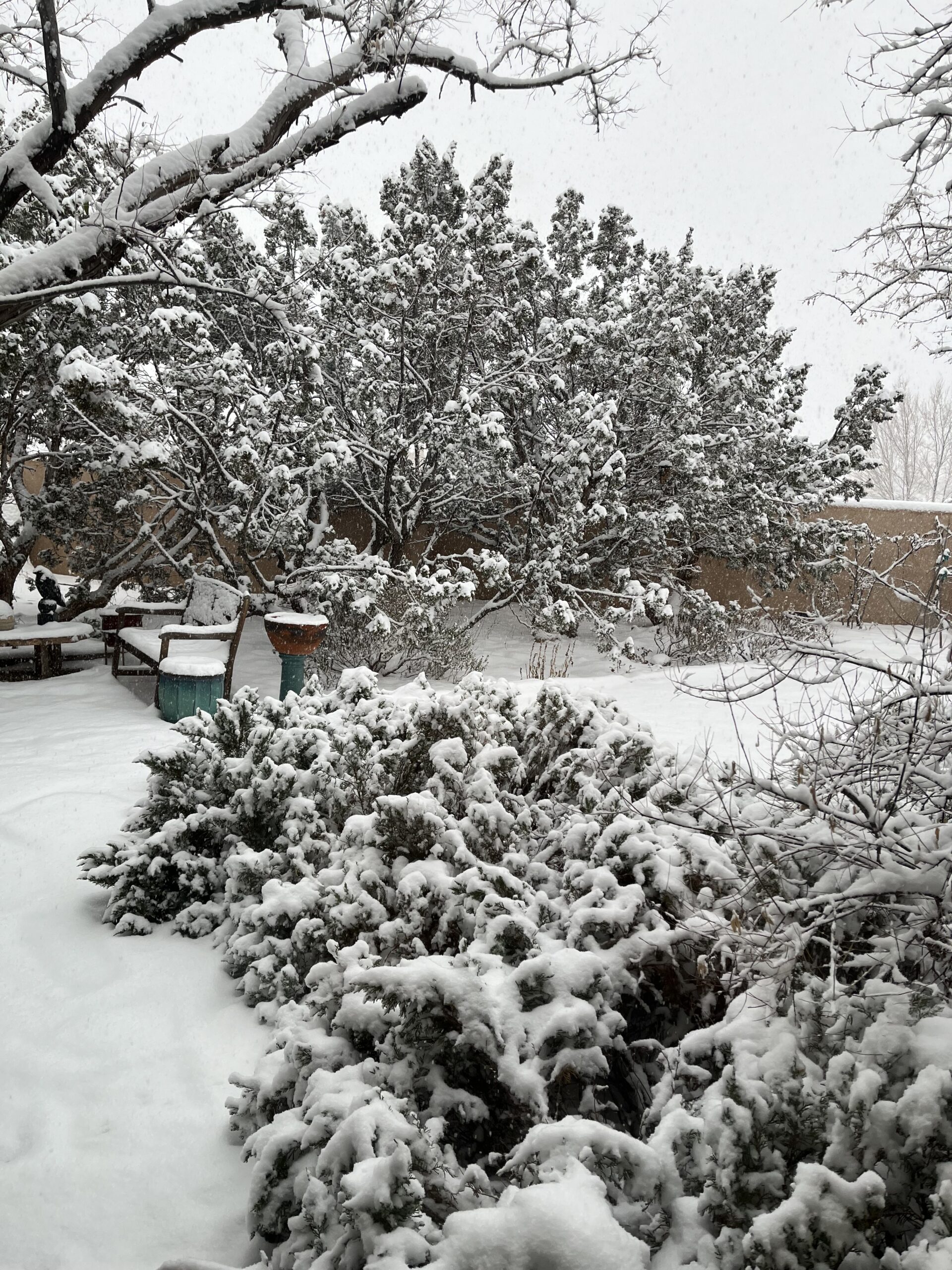
02 Dec 2023 Wintering benefits horses and humans
During the COVID pandemic, when being outside meant pacing in our backyards or maybe making tracks to see if any mail had arrived, a British author named Katherine May wrote
I hail from the central Midwest, where winters can sometimes be deadly and stretch out for six months. Living in the high mountain desert region offers me stunning beauty and an opportunity to reset without fears of spinning out on a highway or being hauled out of a ditch by a truck driver, both of which happened to me on more than one occasion.
Owning a horse in the desert Southwest shares similarities with trudging through the ice in a South Dakota winter. Snowballs, not the kind you hurl at a friend on a sunny day, chipping ice in water buckets with a sledgehammer, and sliding a hand under a blanket to check your boy or girl’s temperature are horse owner habits regardless of location.
The New Mexico Horse Council, a wealth of information, including facts about winter horse care, reminds horse owners how to care for their animals when the temperatures drop and the snow banks mount. On the Council’s website, winter care is one of only several helpful topics for horse owners.
 Readers of Nicker Notes know I have been nursing a soft tissue injury in my horse’s foreleg. On Monday, I tacked up my 25-year-old boy and rode him at the walk for the first time since mid-July. Though my vet and good friend declared my horse eighty-five percent healed, I am revisiting wintering habits of my own — not so much resting and retreating — but dialing back the pace at which he and I return to the saddle permanently. Healing doesn’t often move at the speed of our expectations. Last week, before I saddled my horse after a long hiatus, I sat on the trunk outside his stall, watching and listening to him devour his hay. The sounds of scraping, chewing, grinding, and sighing highlighted why horses are in my life. Slowing down, listening, giggling, and watching him give me the side eye set my mood and goals for the day.
Readers of Nicker Notes know I have been nursing a soft tissue injury in my horse’s foreleg. On Monday, I tacked up my 25-year-old boy and rode him at the walk for the first time since mid-July. Though my vet and good friend declared my horse eighty-five percent healed, I am revisiting wintering habits of my own — not so much resting and retreating — but dialing back the pace at which he and I return to the saddle permanently. Healing doesn’t often move at the speed of our expectations. Last week, before I saddled my horse after a long hiatus, I sat on the trunk outside his stall, watching and listening to him devour his hay. The sounds of scraping, chewing, grinding, and sighing highlighted why horses are in my life. Slowing down, listening, giggling, and watching him give me the side eye set my mood and goals for the day.
A couple of days ago, winter arrived in greater Santa Fe. Between four and six inches of wet snow fell and is already melting. When I first moved out here, I was perplexed by people’s lack of commitment to shoveling their drives or walkways. Just wait, the sun will melt it, I was told. Nearly twenty years after arriving in this part of the country, I wait for sun rays, too. Counterintuitive to how I lived for many years, I also follow my horse’s way of being. Slow down. Eat a good breakfast. Look at the landscape and breathe.
Writing assignments continue to flow, suitable for Nicker Notes and my business pocketbook. Check out a digital posting I wrote for The Horse.com about the shivers condition.
Stay tuned for a second posting this month highlighting horse books for the holidays! Until then, stay healthy, stay horsey.

